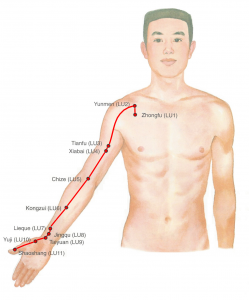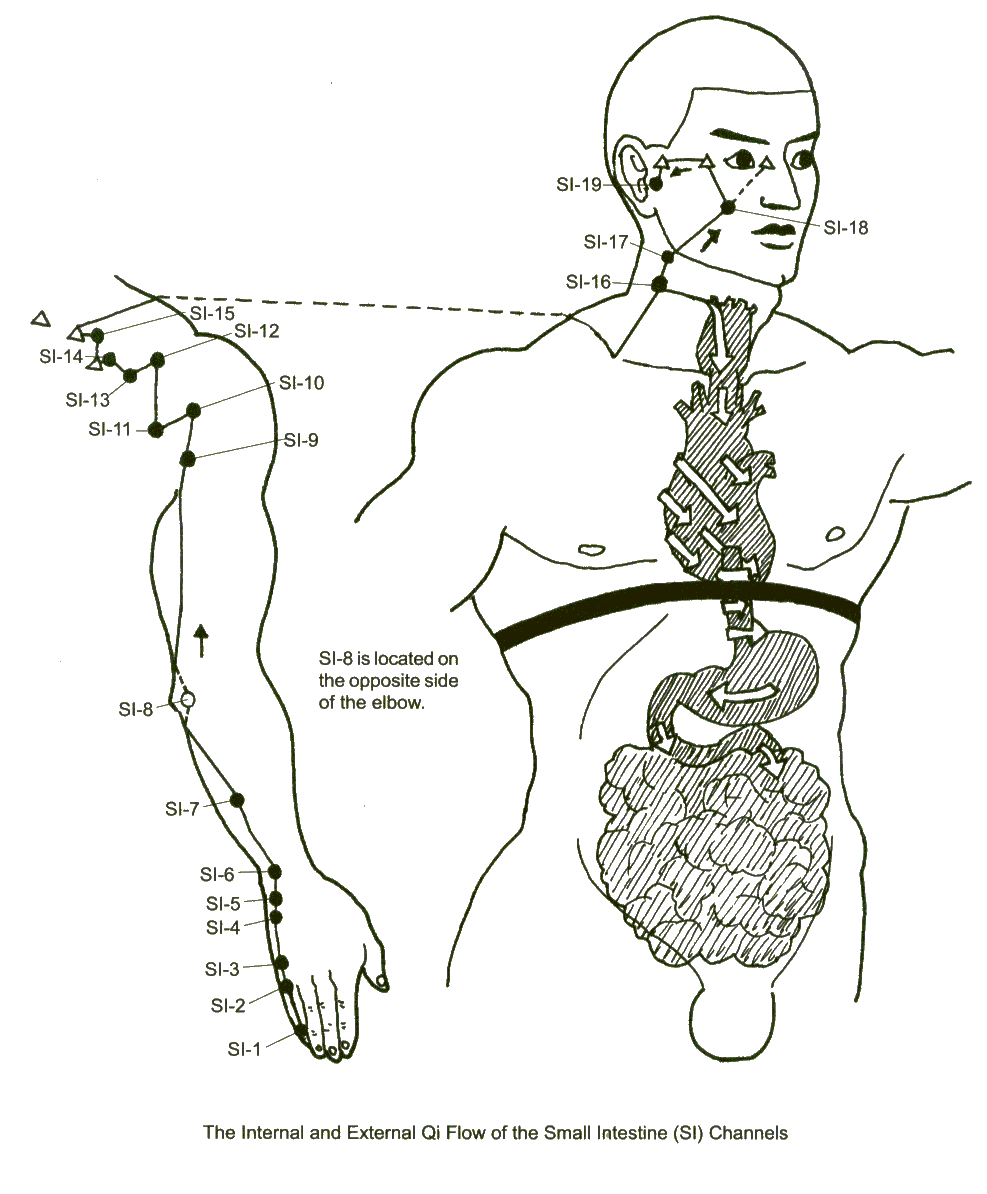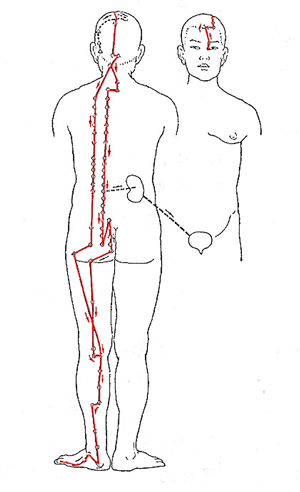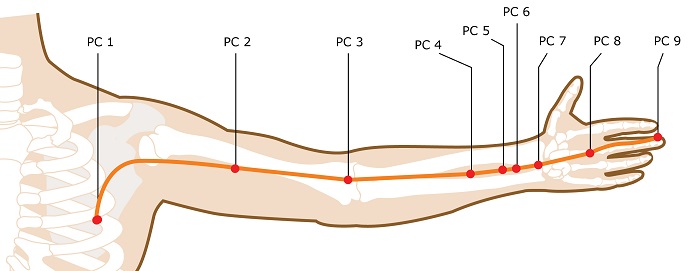Acupressure is a traditional Chinese medicine technique that involves applying pressure to the body's energy meridians. It can be compared to acupuncture, but while acupuncture uses very fine needles, acupressure treatment involves pressure from a practitioner’s hands or objects, like an acupressure mat.
Acupressure practitioners apply pressure on meridians, where energy – called qi – flows throughout your body. They are sometimes described as channels for your body’s energy.
How Does Acupressure Work
The goal of acupressure is to balance your life force by stimulating specific points in order to promote or maintain healing. An acupressure practitioner determines, through an examination of the body, which pressure points will achieve that goal.
After identifying the target points, the practitioner can apply pressure directly by pressing and releasing the pressure with their fingers, or they can use a firm, circular motion. Sometimes, the practitioner may incorporate both motions.
The theory behind acupressure is that illness or discomfort is caused by the body’s qi (or chi) being blocked. By pressing on specific spots, the blocked energy is released and the energy can start to flow again.
Pressing on the points can also promote blood circulation and relieve muscle tension. The pressure may also release endorphins, which are natural pain-relieving chemicals.
Benefits of Acupressure Therapy
In Traditional Chinese medicine, many practitioners claim acupressure can be a useful treatment for anything from insomnia and stress to nerve pain, nausea and headaches. Acceptance in Western medicine is more conservative, but generally positive or neutral.
Cardiovascular health
Heart disease is the leading cause of death in the United States, with approximately 659,000 Americans dying annually. Fortunately, with the right lifestyle changes — and in some cases medication — the CDC estimates that around 80% of cardiovascular diseases are preventable.
Could acupressure help those showing early signs of heart disease change the course? Some medical professionals think so.
In a 2010 study conducted by the Department of Psychology and Neuroscience at the University of Colorado, researchers found that fingertip stimulation of acupressure points on the skin "reduced heart rate significantly more than" placebo acupressure during treatment of stroke victims.
A high resting heart rate is associated with an increased risk of cardiovascular disease and shorter life expectancy, so, finding ways to lower it is a smart practice for long-term cardiovascular health. Acupressure could be one of several effective tools at accomplishing this goal.
Better sleep quality
Acupressure might result in a better night's rest, too.
One study published in 1999 issue of The Journals of Gerontology assessed whether acupressure could increase the sleep quality of institutionalized elderly. The results showed a "significant reduction in the frequencies of nocturnal awakening and night wakeful time in the acupressure group compared to the other two groups."
No matter your age, acupressure may be worth exploring if you have a hard time staying asleep at night.
Back pain relief
Finding relief from chronic back pain can be a frustrating endeavor. There are few reliable treatment options and even fewer if your goal is to relieve back pain naturally. For the latter, acupressure may offer some hope.
A group of orthopedists and neurologists in Taiwan aimed to see how acupressure compared to physical therapy in lower-back pain, specifically. In their case, acupressure was far more effective than physical therapy with acupressure patients reporting an "89% reduction in significant disability compared with physical therapy."
Acupressure is not meant to be a cure for any medical condition, serious or not. It should instead be considered one potential tool in your toolbox, particularly if more common Western treatments aren't proving effective.
What Are The Body Meridians?
Body meridians are found throughout the body. As the energy flows, it helps with physical, emotional, and spiritual health. Most meridians match with a body organ and practitioners believe that the meridians are so sensitive that they respond to touch, as well as needles.
Acupressure Map Of The Body [MVD1]
There are 12 major or primary acupressure points on the human body which correspond to different parts of the anatomy.
Lung Meridian

The lung meridian runs from the front of your shoulder near the collarbone, along the inside of your arm, to the tip of your thumb. It is related to how your body uses energy, as well as breathing issues and respiratory infections. It has 11 pressure points.
Large Intestine Meridian

The large intestine meridian starts at the tip of the index (pointing) finger, runs along the top of your hand and arm, up to your shoulder to your neck, and then up the cheek and under your nose. This meridian is responsible for the body surface, the senses, mental function, as well as fever. It has 20 pressure points.
Spleen Meridian

The spleen meridian, which is partly responsible for digestion, as well as logical and analytical thinking, and memories, has 21 points. It moves up from the tip of the big toe, along the inside of the foot, up the inside of the leg, along the side of the torso, passing beside the nipple and then goes down to under the arm.
Stomach Meridian

The stomach meridian is one of the longer meridians in the body. It has 45 pressure points. This meridian starts just below the eye, in the center, and runs down the face to the neck, with a “detour” from the jaw joint (mandible), up past the ear to the scalp.
The meridian continues down from neck along the body to the nipple, then to the groin and down the leg to the tip of second toe. The stomach meridian helps move the food along the digestive tract, promoting healthy digestion.
Heart Meridian

The heart meridian, which runs from the underarm (axilla) along the outer aspect of the arm down to the tip of the little finger, helps maintain a healthy mental state of mind. It also works with other organs to promote healthy circulation. There are nine points.
Small Intestine Meridian

The small intestine meridian is found on the back of the body and runs up. This meridian starts at the tip of the little finger, moves up the back of the arm, past the elbow, to the shoulder. It zigzags a bit as it reaches the shoulder blade (scapula), back up to the shoulder, to the side of the neck, to the cheek bone and ending up at the ear. There are 19 points.
Bladder Meridian

The bladder meridian is the longest one in the body, with 67 points. It starts at the inner eye and goes up over the scalp to the back. It runs down the back and then down the leg to the heel, along the outside of the foot, ending at the tip of the baby toe.
This meridian provides energy and vitality, helps the urinary system, and can help manage pain in the head, neck, back, hip, knee, and ankle.
Kidney Meridian

The kidney meridian starts at the bottom of the baby toe to the middle of the foot (arch) and then up along the inside of the leg to the above the pubic area. The meridian continues up the center of the front and then veers off to the side and stops at the collar bone.
Often referred to as the “root of life,” the kidney meridian plays a role in memories, attention span, sexual health, and back pain. There are 27 points.
Pericardium Meridian

The pericardium meridian is another line that travels along the arm. It starts just at the side of the nipple and goes along the inner part of the arm, across the palm of the hand, to the tip of the middle finger.
Its protection focuses on the mental, emotional, and spiritual parts of the body, as well as blood circulation and sex and love. This meridian, which has nine points, is one of two that is not associated with a body organ.
Triple Warmer Meridian

The triple warmer meridian is the second meridian not associated with an organ. With 23 points, the triple warmer meridian begins at the tip of the ring finger and travels along the side of the finger over the top of the hand and up the arm to the shoulder.
There, it moves along the back of the shoulder to the neck, up the side of the neck, over and around ear to the tip of the eyebrow.
This meridian helps control the body’s metabolism, digestion, and body waste.
Gallbladder Meridian
The gallbladder meridian has 44 points and starts at the outer point of the eye and, rather than a straight line, it goes to just in front of the ear lobe and then zigzags around and over the ear, back over the scalp, and down the side of the body down to the tip of the fourth toe.
This meridian helps with digestion, muscle energy, judgement, and timidity.
Liver Meridian

With 14 points, the liver meridian begins under the nipple, travels down the side of the torso, crosses over the pubic area and continues down the inside of the opposite leg, along the foot to the tip of the big toe. The liver meridian is responsible for the peripheral nervous system. These are the nerves outside the spine and brain, such as the nerves in the arms or toes. It also plays a role in blood pressure regulation, relaxation, and anger.
What Is The Difference Between Acupressure and Acupuncture?
Acupuncture and acupressure are both traditional Chinese medicine techniques that are gaining in popularity in North America. The practices are similar, but differ largely in the tools used in practice.
Acupuncturists use very fine needles inserted into spots along the meridians to treat a number of diseases and conditions, both physical and mental. The needles are virtually painless because they are so fine. Acupuncturists follow the same theories as those who practice acupressure.
There can be two approaches to acupuncture. A practitioner can follow the traditional Chinese principles, which focus on opening up the energy flow. An alternative Western approach sees the treatment as a way to stimulate the nervous system or manage trigger points that may be causing pain or other symptoms.
Aside from the needles, the biggest difference between the two is acupuncture can only be done by a licensed acupuncturist who has studied and been certified as a professional. Acupressure can be done by someone who has studied acupressure, often a massage therapist, but it can also be done at home, using hands or special tools.
Popular Questions About Acupressure
Can I perform acupressure at home on my own?
In most cases, it is safe to do acupressure at home. There are many books, apps, and videos online about how to do acupressure on your own.
How long does it take to feel the effects of acupressure?
Some people feel some relief after their first session, but it usually takes several sessions before the relief is consistent. Some people continue acupressure sessions after they feel better in order to maintain their current state.
Is acupressure safe?
As a rule, acupressure is generally safe for most people. However, there are some people who should speak with their doctor or nurse practitioner before going ahead and trying it. Acupressure is usually not recommended for people who have high blood pressure, are pregnant, or have open wounds. Acupressure should not be done on areas that are swollen or inflamed, have varicose veins, or scar tissue.
What are the best tools for acupressure at home?
People who would like to do acupressure at home can use their hands, but they can also purchase acupressure tools, such as mats, rollers, even sandals. It can take a while to get used to the tools and how much pressure to use. It does take some trial and error but having the tools at home means you don’t have to make an appointment to get relief.
References:
Medline Plus: https://medlineplus.gov/ency/article/002117.htm
MD Anderson Cancer Center: https://www.mdanderson.org/cancerwise/4-acupressure-points-to-relieve-headache--nausea-and-anxiety.h00-159463212.html
Cleveland Clinic: https://health.clevelandclinic.org/stressed-try-this-easy-9-minute-acupressure-exercise-video/
Memorial Sloan Kettering Cancer Center: https://www.mskcc.org/cancer-care/patient-education/acupressure-pain-and-headaches
Traditional Chinese Medicine World Foundation: https://www.tcmworld.org/what-is-tcm/meridian-connection/
Chiro.org: https://www.chiro.org/acupuncture/ABSTRACTS/Acupuncture_Points.pdf
Cleveland Clinic: https://my.clevelandclinic.org/health/treatments/4767-acupuncture
Western medical acupuncture: a definition: https://pubmed.ncbi.nlm.nih.gov/19369193/


Is there a warranty on the mount and how long are they expected to last for several years and still help and which would help the best for two fusions and disc between my shoulders and neck and the pain and carpal tunnel pain